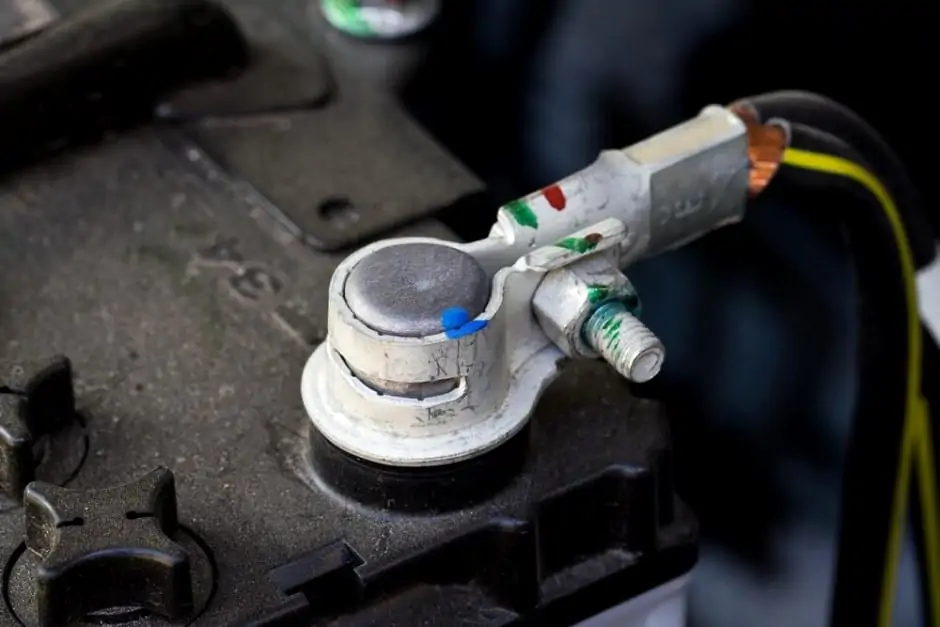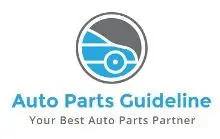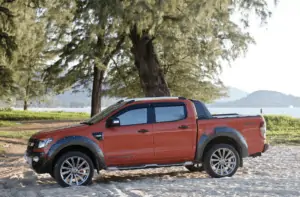Today we are going to discuss a frequently asked question: how to start a car with a bad starter automatic transmission?
Well, if this happened for the first time, you have an 80% chance to get your car started without changing the starter.
The only way to make a bad starter work is gently hitting with a hammer. (When you are 100% sure, the problem is with the starter)
Why?
Because over time dead spots are created in between armature and the field coils.
When you hit with a hammer, it moves and lets the starter work again. (You can’t do it again & again). Change the starter as soon as possible.
Well, there are a few other reasons as well and you may find that the starter is ok and there is a problem with something else.
And, don’t worry about expenses, if you have comprehensive car insurance, you are covered. If you don’t have one, get one from BestCarInsuranceFinder.com.
Keep reading, you will find everything in this article.
Detail Solution Of Bad Starter
Bad car starters are one of the leading car problems encountered in auto repair shops.
The emergence of electric vehicles and hybrids could be a lasting solution to these problems. But before we all turn to electric cars, starter problems will remain a significant leading cause of car problems.
Therefore, if your starter misbehaves, what can you do?
What options are available to enable you to start your car and proceed to the next available repair shop?
It is essential to appreciate that car starter problems can occur unpredictably due to a variety of reasons.
Common reasons for car starter problems include; loose terminals, corroded terminals, damaged or worn-out system components. If you realize one of the forenamed reasons, then it may be difficult to start your car.
Regrettably, it may take time to discover the real cause of why your car can’t ignite at once. Most individuals keep turning on the ignition key to see whether the engine will ignite, but in most cases, this action isn’t helpful.
Luckily, most car problems can be traced to a source. Trying several strategies can help to determine the exact cause of ignition failure.
Try out the following spots to determine what could have gone wrong with your car starter system. Start with simple solutions as you advance to the more complex ones.
Typically a starter requires the following to function:
- Positive current arising from the battery
- A ground
- Positive current trigger coming to the starter solenoid arising from the starter relay.
All these three can be bypassed as you ignite the engine and drive safely to a repair shop.
Start By Checking The Connections

This is the primary point at which you should start your checks. Ensure that you have no loose connections from the battery to the starter since this is the most common cause of starter problems.
If you detect any loose connections arising from the battery to the starter, this might mean that your starter isn’t receiving adequate amps to function.
Use a ratchet to tighten the battery terminal connectors. If all seems well, try following the positive wire that arises from the battery.
This wire splits typically into two; one leads to the alternator while the other goes to the starter. Follow through the wire and try checking to determine if it is loose.
If no loose connections are discovered, consider bypassing this positive wire that originated from the battery using a large jumper cable.
As you do these turn your car key to start position?
Have A Look At The Engine Grounds

The ground wire leading to the starter doesn’t originate from the battery. The ground rises from the transmission via the starter’s outer frame.
On the other hand, the transmission acquires its ground from the ground wires that link the transmission to the body of the car.
If any of these wires are damaged or rusted, this could be the reason why your car can start.
Note that both the engine and transmission ground wires can affect the overall ground reaching the starter. Both ground wires must be faultless for the starter to function optimally.
Try bypassing this error by connecting the batteries’ negative post to the taster frame by use of a jumper wire. If the problem was the ground on the vehicle, then your car should be able to start easily with this connection.
Hit The Starter Gently With A Hammer
This is one of the traditional ways of dealing with car starter problems. Any conventional mechanic will advise you to hit the starter as you crank to make it work.
This advice can work since starters develop dead spots between the armature and the field coils as time passes by, by tapping the starter with a hammer, you will make the armature spin adequately to start.
This trick may not work for most cars since most modern cars have a traversal engine, unlike the previous models that had longitudinal engines.
With traversal engines, the starter is at the back of the engine; this location may be unreachable even with bare hands.
If this is the case with your car, look for a ratchet extension bar or an extended prybar to tap the starter.
What About The Starter Solenoid’s Wire?
It is the solenoid that makes it possible for the starter to engage with the transmission’s ring gear, though the ground and the positive can turn on the starter.
When the starter turns free when cranking, then the problem is most probably the solenoid. In this case, look for the smallest wire that connects to the starter and check if it has dirt or rust.
To solve this problem, you can pot to bypass the starter solenoid wire. Use a small wire to offer a 12v current from the battery to where the solenoid connects to the starter.
You will hear a click when connecting this wire. Finally, crank the engine to start your car.
Inspect For Corrosion
Corrosion is the lead enemy that corrupts electrical conductivity. It is essential to ensure that your battery terminals are devoid of any acid deposits and corrosion.
To clean dirty battery connectors, mix equal quantities of sodium bicarbonate and water in a small container and pour this mixture over the terminals. Allow it to soaks for a few minutes then use clean hot water to clean the connectors.
As you work on the battery terminal connectors, remember that corrosion could be at the other end of the wires.
Inspect the solenoid connector and the positive connector for any corrosion. Don’t forget the tranny grounds and engine connections. Free them from any rust, acid, or dirt.
Try Jump-Starting The Car
Though jump-starting the car may not produce any results in most cases, tying can yield some results. If your battery is in perfect condition, it should supply adequate current to the starter to make it function normally.
Trying won’t hurt; jump-start the car using a large battery or a jump-starter. It will assist the armature to overcome any dead spot and afford enough power to spin.
How To Bypass The Starter Relay
You can easily use a screwdriver to bypass the starter relay. Old car models are ideal for this trick though it will work in all cases where the starter is reachable via screwdriver.
The screwdriver is used to bypass a faulty ignition switch or starter relay.
Use the screwdriver to connect both the solenoid terminal and the positive starter terminal. This connection will help to bypass the relay and supply 12v current to the solenoid hence starting the car.
Check The Battery Voltage
Using a voltmeter, you can measure the voltage available from your battery. This will determine if your battery has enough current to run the starter.
How to check the battery voltage.
- Set the voltmeter on a voltage higher than the battery voltage. For example, 25v on DC voltage stage
- Connect the terminals on the voltmeter to posts on the battery
- Put on the car’s headlights
- Take readings on the voltmeter
If your battery has sufficient current, the readings on the voltmeter should be between 12.4V-12.6V; this translates to a 75%-100% charge.
If the readings are less than 12.4V, then you can them charging the battery first before trying to turn on the engine.
A battery with a reading of 12.4V or lower on the voltmeter requires a hydrometer to check if the battery is older than three years.
The voltage might be a sign that one or more cells have died. You can purchase quality affordable hydrometers online.
Inspecting The Starter Motor
The location of the starter motor on your vehicle will depend on the model.
Sometimes you might need to remove the manifold or raise the car front or any other component to get to the starter motor. The car repair model for your car can guide you on the location of the motor.
To raise your car, use jacks to support it alongside parking brakes. Remember to block the wheels to avoid rolling the car.
Ensure the starter mounting bolts are not loose. Loose bolts will hinder the starter drive from engaging the flywheel correctly.
If this occurs, you will hear a crashing noise as you try to start the engine. This is a result of a clash between the starter’s pinion gear and the flywheel’s ring gear.
When you discover that the mounting bolts are tight, consider removing the motor to check the pinion gear. This is the small gear on the front side of the starter that helps to crank the engine by engaging the flywheel.
Inspect the pinion gear to determine if the teeth are damaged or worn out. If the teeth are damaged or worn out, it is impossible to crank the engine.
To determine the fitness of the starter, use a regular screwdriver to rotate the pinion gear.
If it is in excellent condition, it should only turn in a single direction. If it is immovable, or it rotates in both directions, this is an indication you need to replace the starter.
Check The Engine Flywheel
As you inspect the motor, also check the flywheel. The flywheel is a huge wheel that lies between the transmission and the engine. The starter gear engages this wheel when cranking the engine.
After removing the starter motor, make sure you have set your transmission at neutral.
Ask someone to help you to rotate the crankshaft. They will achieve this by using a breaker bar or a ratchet to turn the center bolt that is located on the crankshaft pulley. This pulley lies in the front bottom part of the engine.
The pulley rotates the drive to run the steering pump, alternator, and other relevant components. Based on your car model, you may have to extract the wheel to get to the pulley center bolt.
As the flywheel rotates check for missing or damaged teeth. You should replace the flywheel if you discover missing or damaged teeth since it‘s impossible to crank the engine in such a condition.
Test The Starter Motor
After inspecting the starter motor, it is essential to proceed to an auto parts store to figure its functionality. In most of these stores, the service is free.
If the starter motor is aged, it will have worn out shaft, armature, brushes, or burned filed winding that result in unusual noises, slow cranking, poor current transmission, and eventually no cranking.
An inspection of the motor at the auto parts store will disclose the general condition of the motor.
It will determine if the motor is drawing sufficient current to start the engine and the state of the inner components of the motor.
What Are The Options If No Car Nearby?
If your car stalls in a remote area, or while an off-roading trip and the probability of getting another car to assist in jump-starting your battery isn’t available, the best choice is always to have a jump-start device in your vehicle.
This is a rechargeable device that will provide current to your car battery. A jump start device is a must-have for any car owner. You never know when disaster will strike.
Besides a jump-start device, you require goggles and insulated gloves as a safety measure.
Don’t risk working on your battery with bare hands and unprotected eyes. Rubber gloves are the best when handing battery acids.
Final Words
If your car faces starter problems, remember that faulty electrical connections, lack of battery maintenance, and other components are the leading causes of car starter failures.
No matter the source of car starter problems, I believe these tips will help you to come up with a reliable solution to the issues.
You can efficiently resolve car start problems if you opt to try any of the tricks and tips I have highlighted in this article.
If these tips have not solved the starter problems, you can still try out other simple ways of troubleshooting strategies.
Kindly share your experiences on car starter problems with the readers and the tips that have worked for you. If you have any other exciting ways to resolve your car starter problems, you can also share.

![Read more about the article Castrol Edge vs Mobil 1 [Two Leaders Compete Here]](https://autopartsguideline.com/wp-content/uploads/2021/07/Castrol-Edge-vs-Mobil-1-300x196.webp)
